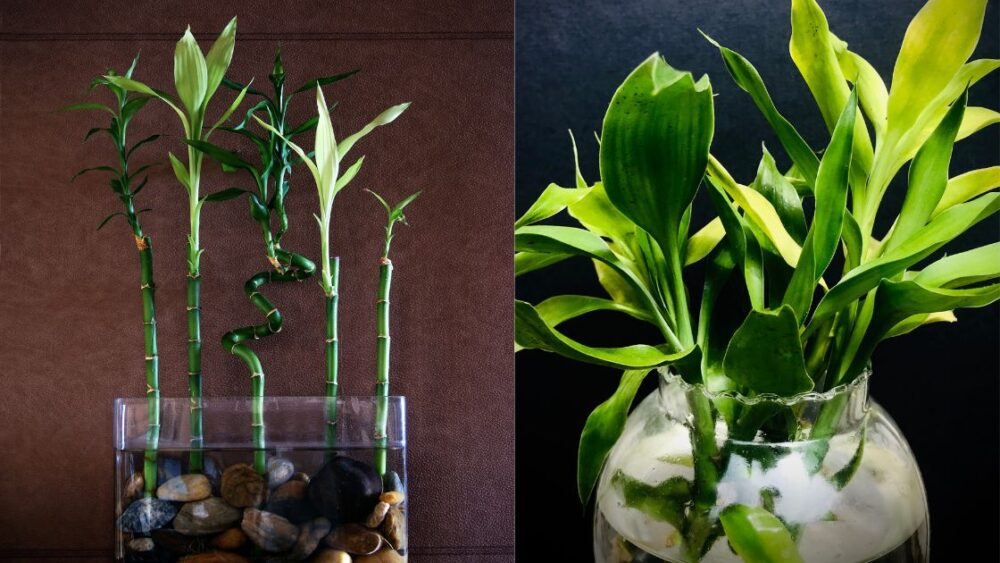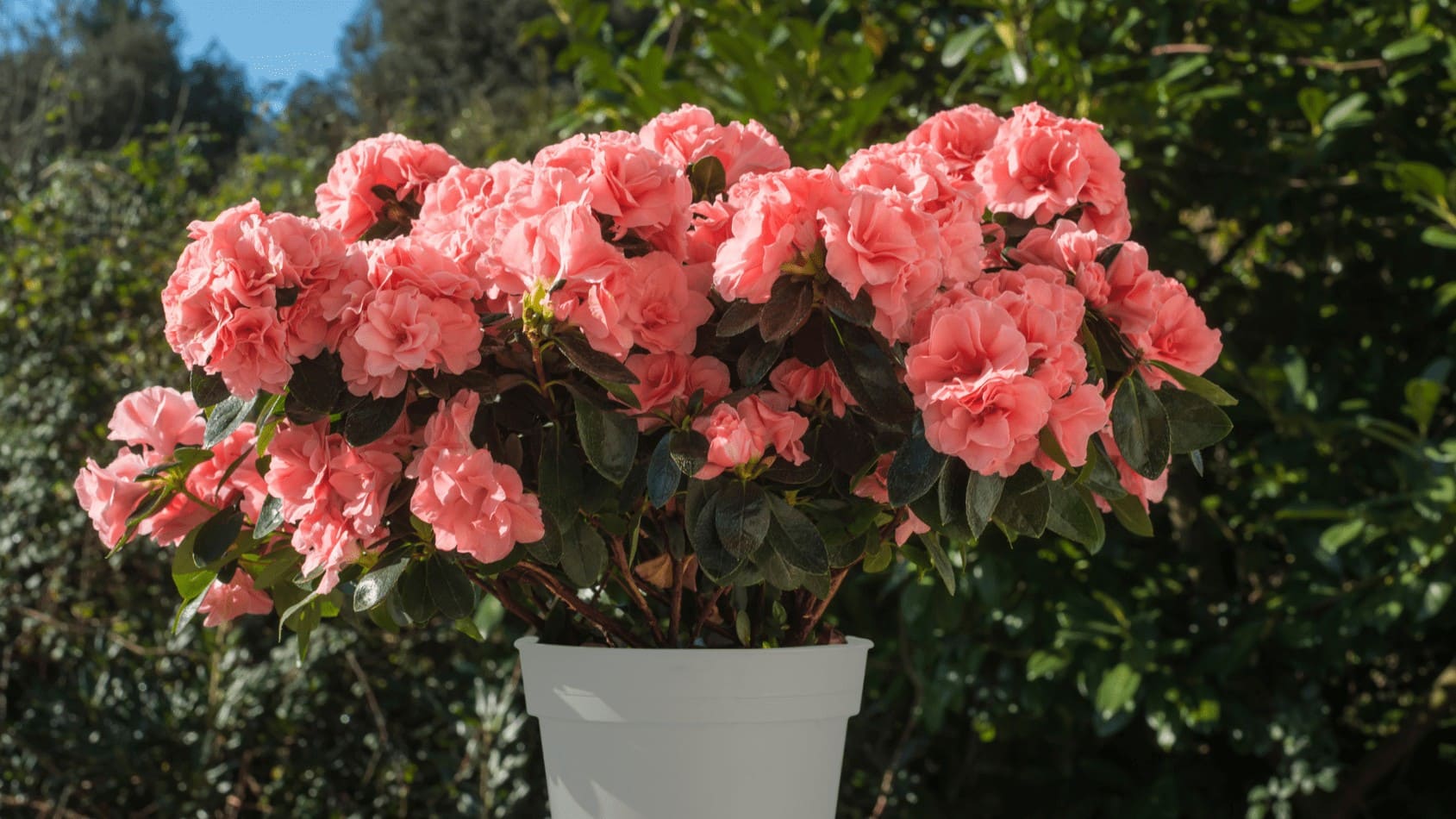
Lucky bamboo (Dracaena sanderiana) makes an ideal indoor plant for its intricate stems and resiliency. No matter what level of gardening you have, a lucky bamboo plant is a great way to spruce up your indoor greenery. It is common to see lucky bamboo plants in offices and homes for feng shui reasons because of their pleasing shapes, swirls, or braided stalks. A lucky bamboo plant thrives in low, indirect light and is easy to care for. Dracaena sanderiana is similar to bamboo from Africa, but it isn’t really bamboo at all.
It’s a relaxing pastime to take care of a lucky bamboo plant, which reduces stress. Lucky bamboo is thought to promote happiness and prosperity in homes and businesses. The bamboo looks great in every home, especially if you’re a fan of the bamboo look, and is usually quite easy to find.
You should know a few things before bringing a potted bamboo home.
Browse our Affiliate Products
Is lucky bamboo actually lucky?
Feng Shui experts believe the lucky bamboo plant will bring luck and prosperity to the place where it grows.
According to ancient Chinese Feng Shui, a Lucky Bamboo plant is supposed to attract positive energy, bringing good health, peace, happiness, prosperity and longevity into a house.
It is believed that different numbers of stalks of lucky bamboo bring various benefits and luck, for example:
- Six stalks symbolize good fortune and wealth. The seven stalks symbolize good health.
- An eight-stalk plant represents growth.
- Nine stalks will bring great luck.
According to Feng Shui, those who possess more stalks of a lucky bamboo are likely to be prosperous and wealthy. The four stalks, however, are considered bad luck.
If you would like to bring more luck, check out this article on:
Where should I place lucky bamboo in my house?
Feng Shui and Vastu both believe that some places of lucky bamboo are more beneficial than others.
Vastu recommends planting bamboo in the eastern corner of the house. In the home, this zone represents the family’s energy. If the house is near the entrance, it will attract positive energy.
To view our affiliate selection of pots, check out our plant pot category here: Plant Pots
Ideally, you should place three to nine stalks of lucky bamboo in your wealth corner, Xun position, at home, at work, or in your bedroom to attract more prosperity. Look at the far left corner of your front door or room to find your wealth corner.
Also, check out amazon.com selection of lucky bamboo by clicking here: lucky bamboo plants live
Should lucky bamboo be in water or soil?

In a short answer, yes, Lucky bamboo can be grown in soil or water.
Make sure that the roots of your bamboo are always covered with water if you choose to grow it in water. For a happy, healthy bamboo, replenish its water every seven to ten days. The best way to keep the roots of your bamboo plant moist and healthy is to use filtered or distilled water. Some chemicals in tap water can burn the stalks. Refresh your plants with clean water at all times
You should keep your newly repotted lucky bamboo moist for the first few weeks after repotting it from water to soil. As soon as it develops new roots, you can stop watering it. Afterwards, add more water when the top inch of the soil feels dry.
For more information on water gardens, check out this artice:
Other Optimal Lucky Bamboo Growing Conditions

Even though luck plants are easy to grow and require little care, there are some optimal Lucky Bamboo growing conditions that you should follow.
For example, you shouldn’t overwater or let the soil get dry if you are planting in soil. The best temperature range for lucky bamboo is 65-95°F (18-35°C). As a plant in the hardiness zones 10–11, it thrives in these somewhat tropical conditions.
Common Names:
Some common names of this plant include Sander’s dracaena, Ribbon dracaena, Curly Bamboo, lucky bamboo, friendship bamboo, Chinese Water Bamboo, and Belgian evergreen, among others.
Scientific name:
Lucky bamboo is scientifically known as Dracaena sanderiana.
Growth Cycle:
In tropical western Africa, lucky bamboo is a perennial herbaceous plant.
In six months, lucky bamboo typically grows to about 19 inches. The plant can grow up to 38 inches in a year. It is important to note that the plant’s growth is usually divided into stages. Approximately 10 to 12 inches of growth can be expected in six months. It can brighten your space and bring you luck with just a little care.
Sun:
Indirect or moderate sunlight is best for lucky bamboo. It is best to avoid placing your plant in front of a bright window since direct sunlight will scorch the leaves. A scorched leaf looks just like it sounds: Its edges will appear brown, almost as if it has been burned by fire. Too little light is more tolerable than too much.
You should move your lucky bamboo into a bright area that does not receive direct sunlight if you get sunburn on your lucky bamboo. As the damage cannot be reversed, you can cut off the brown leaves. If you want to encourage the new growth of your lucky bamboo, mist the area around it for a few days. Let the lucky bamboo recover for a while.
Watering:
You don’t need to water your bamboo plant very often. Overwatering can be harmful to it. Approximately once a week, water your plant and keep the roots covered at all times with a few inches of water. Make sure your soil isn’t too moist or dry in your pot.
Adult Size:
When planted in a conducive environment, the plant can reach a height of 8 feet and a width of 2 feet.
Planting it indoors, however, won’t allow the plant to attain these heights. Most mature plants will reach only three feet in height.
Planting Zones:
Optimal growing conditions for lucky bamboo are indirect light and temperatures ranging from 65 to 95°F (18 to 35°C). The hardiness of this plant lies in zones 10 and 11 as it is adapted to some tropical conditions.
Weather Hardiness:
Low-light conditions are ideal for this indoor houseplant. Lucky Bamboo plants will be damaged by excessive heat or cold. Don’t expose yourself to temperatures below 45°F or above 90°F.
Growing lucky bamboo plants indoors, preferably in a bright, warm environment, is the best way to ensure their success. Planting lucky bamboo outdoors is possible, but the plant may suffer from harsh sunlight or cold temperatures.
In temperatures less than 55 degrees Fahrenheit, lucky bamboo plants may not survive and should never be placed in front of air conditioners. It is also essential to avoid extreme heat, just as avoiding direct sunlight is necessary.
Propagation:
To propagate lucky bamboo, take cuttings from the parent plant and trim them with scissors or shears. The cuttings should be placed directly in water until they have formed roots. It is also possible to propagate bamboo by planting the cuttings in moist, drained soil.
A 45-degree angle is best for cutting with a sharp knife. Cut several 10-inch long cuttings from a new growth with at least two nodes and two internodes if you want to grow bamboo from cuttings in water.
Place the cutting in a warm, bright place but not in direct sunlight, and water well to moisten the soil without soaking it. New roots should appear within six weeks. It can be kept in its container or transferred to another container.
Toxicity:
Make sure your pets aren’t able to access lucky bamboo, as it’s toxic to them. After consuming this plant, you may find that your furry friends experience incoordination, weakness, vomiting, stomach pain, diarrhea, drooling, and dilated pupils. However, lucky bamboo does not pose a health risk to humans.
Dormancy:
During the cold season, lucky bamboo goes dormant and stops growing.
Soil:
The best soil for lucky bamboo is rich, well-draining, and has the right amount of moisture and nutrients. A pH level of 6.0 to 6.5 is ideal for these plants. Add peat moss to succulent or cactus soil mixes to improve moisture retention.
- Check out amazon.com selection of lucky bamboo soil. Soil Mixture for Lucky Bamboo Plants, Specialized Soil Mix for Lucky Bamboo Plants, Plant or Re-Pot Lucky Bamboo, 4qt
Bloom:
Lucky Bamboo blooms only rarely indoors. The plant blooms in autumn or winter, unlike many household plants. Lucky Bamboo normally blooms during summer in its natural habitat. It usually lasts 4-7 days for a Dracaena bloom to appear.
Fertilization:
To keep our indoor lucky bamboo happy, we only need to apply one drop of liquid feed. The dosage is usually diluted every month or two. Apply a diluted dose (per label instructions) to soil-grown plants every six to eight weeks.
Use fertilizers like Super Green if you grow lucky bamboo in water.
Final Thoughts
The lucky bamboo plant is a versatile gift that brings happiness and positive vibes into your life. Furthermore, it looks stunning, requires little maintenance, and is easy to grow, making it the perfect plant to add to your garden.














